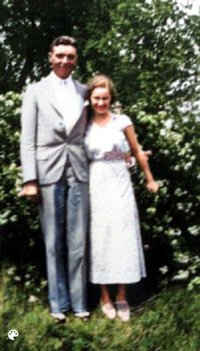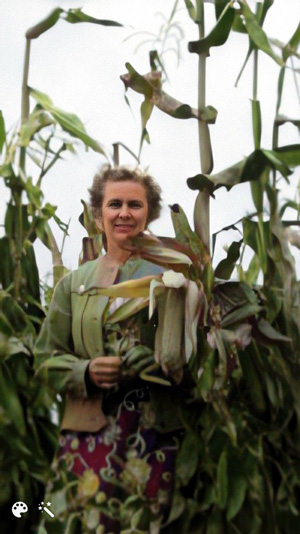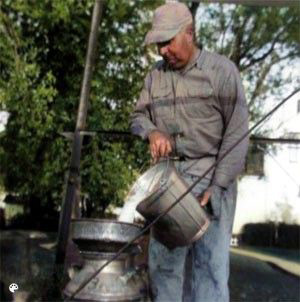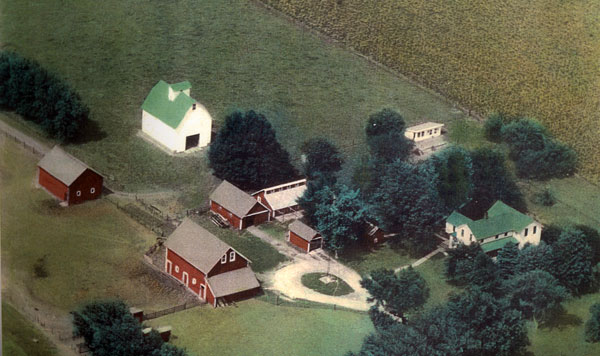The Third Generation
Click to print pdf version of web page
Newlyweds Alfred and Berneice Baumann
 Alfred
Baumann and his wife Berneice controlled the Baumann farm from 1937 to
1970. During his life, he planted soybeans, a new crop that
created more revenue. Gradually, the number of livestock decreased for
hogs, ducks, geese, and chickens were no longer used because many were
produced at large livestock farms.
Alfred
Baumann and his wife Berneice controlled the Baumann farm from 1937 to
1970. During his life, he planted soybeans, a new crop that
created more revenue. Gradually, the number of livestock decreased for
hogs, ducks, geese, and chickens were no longer used because many were
produced at large livestock farms.
The widely-used tractor revolutionized farming and production. The
tractor pulled the steel plow to plow the land. The tractor also pulled
the reaper (now called a combine) to harvest the corn (corn stalks are
shown below) and soybeans starting after World War II. Hence, horses
were no longer needed. Oats stopped being planted since horses were not
used for farming. Clover and alfalfa were still planted to feed the
cattle. Chemical fertilizer replaced manure, and hybrid corn and
insecticides were used. With the addition of more powerful and
versatile tractors, chemical fertilizer, hybrid corn, and insecticides,
production skyrocketed as shown in Figures A and B .
From 1930 to 1970, the production of corn rose from 25 bushels per acre
to 75 bushels an acre and continues to increase to this day. With this
increase in production and change in technology, the average size of
American farms also increased from 160 acres in 1930 to 400 acres in
1970. However, the Baumann farm remained at 160 acres. As in Figure C, farmers in the labor force continued to decrease at a constant rate. Yet, the Baumann's still remained on their farm.

Alfred "Bill" Baumann brings in the cows for their nightly milking.
Berneice Baumann in a corn field
 The
Baumann farmstead remained the same until the end of Alfred's
generation when many buildings and trees ceased to exist. The picture
below shows the entire Baumann farm circa 1950, when there were still
many buildings and trees. The picture below shows the
windmill and an automobile. But there were nevertheless some
changes in the beginning of this third generation. The five-acre
pasture became a three-acre pasture. There were fewer orchard trees and
smaller gardens in response to the presence of grocery stores. Alfred
and his family had a car, radio, and a television. Of course, the farm
had electricity, for it now had lights.
The
Baumann farmstead remained the same until the end of Alfred's
generation when many buildings and trees ceased to exist. The picture
below shows the entire Baumann farm circa 1950, when there were still
many buildings and trees. The picture below shows the
windmill and an automobile. But there were nevertheless some
changes in the beginning of this third generation. The five-acre
pasture became a three-acre pasture. There were fewer orchard trees and
smaller gardens in response to the presence of grocery stores. Alfred
and his family had a car, radio, and a television. Of course, the farm
had electricity, for it now had lights.


Alfred "Bill" Baumann pours milk into a milk can
Baumann Family Farm Circa 1950
